
GEAR
This is the gear I use for my car and landscape photography and video-making. I only include items I've purchased, used, and would recommend if you came up to me and asked.
Affiliate Notice: As a member of various affiliate programs, I earn a small commission on qualifying purchases made using the links on this page. They don’t cost you any extra, but they might help me restock my coffee supply.
Stills & Video
Hasselblad X2D 100C

As a tool designed excusively for photography, I consider this the new ‘grail camera'.
Built like a tank, but extremely comfortable to use, the X2D rewrites many of the accepted norms about stills cameras with devastaing effect. It's a brilliant and beautiful machine.
If you want the very best stills-exclusive camera for mostly static subjects, this is the one to buy.
Hasselblad XCD 80mm f/1.9 Lens

TTArtisan XCD 90mm 1.25 Lens

If you can't get your hands on a Hasselblad 90 or 80mm lens, this will serve you well until you can.
I've shot some of my very best images on the Hasselblad X2D with this lens. Yes, it's manual focus only, and yes, you have to use the X2D's electronic shutter with it, but the results out of this lens are way above its asking price.
I only sold mine after getting the 80mm 1.9.
Hasselblad XCD 45mm f/4 P Lens
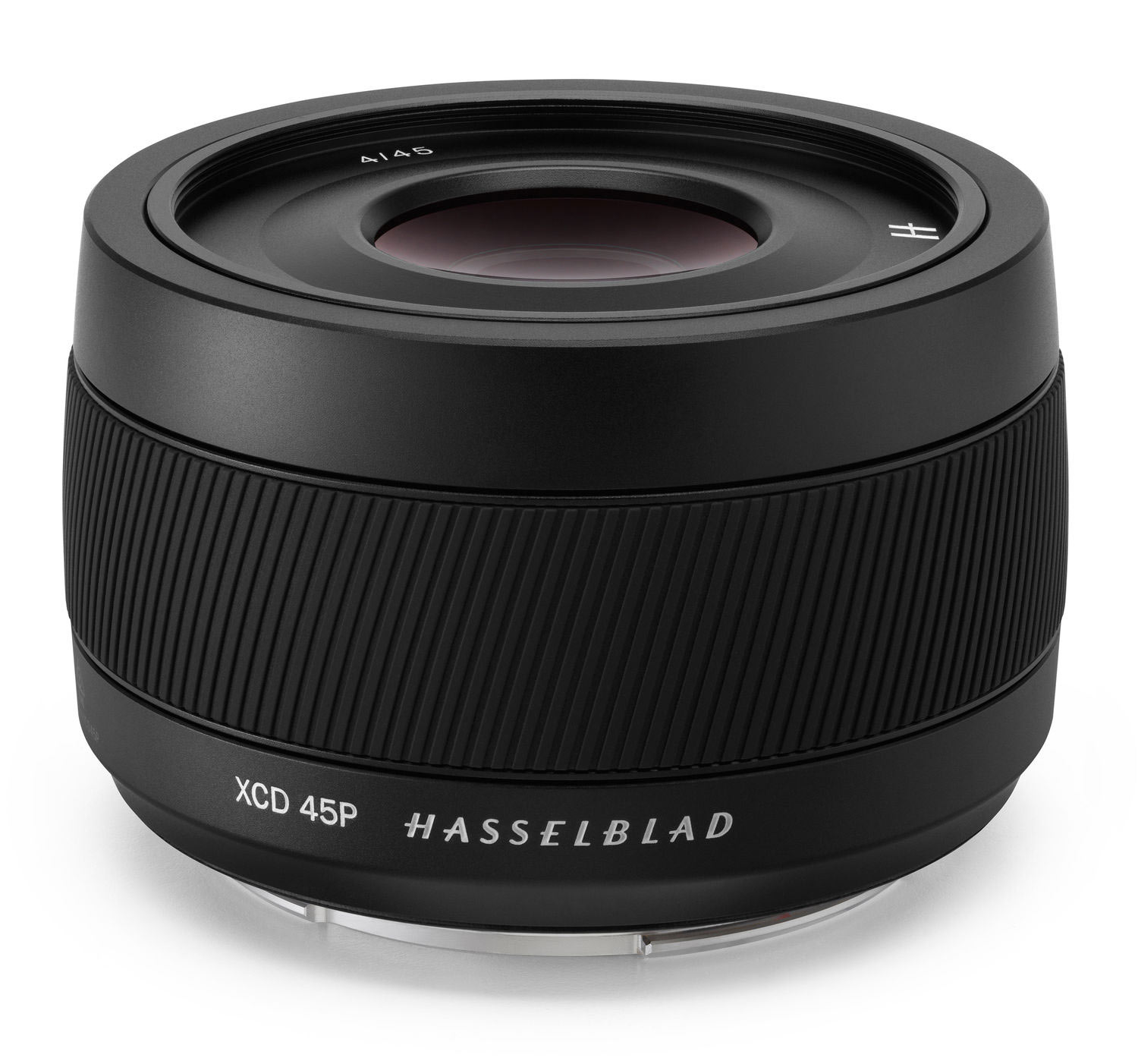
Canon EOS R5 Mirrorless Camera

This is the kind of camera I'd always wanted – full-frame, mirrorless, high-res and built to withstand the great outdoors. Peter McKinnon called it the ‘grail camera', and for good reason.
Forget about the video stats (impressive as they are) – this is an epic stills camera first and foremost. It's fast, extremely customisable, the eye-AF is incredible, and that viewfinder is so beautiful.
Everything falls nicely to hand, the menus make sense, and features like the inbuilt focus stacking and bulb timer make it a powerful tool for anyone keen to make beautiful landscape images.
Despite its stellar specs, I sold it to purchase my absolute dream stills-only camera, the Hasselblad X2D 100C, above.
Canon EOS R6 MK II

I'm back on an R6, and it's goood!
Yep, I'm back with an R6 again – only it's the MK II version this time. I shouldn't be so damn fussy about my gear, but boy, it's nice to have those big fat pixels to play with again – especially in low light.
This is now my main video camera and occasional stills camera.
CURRENTLY USING
DJI Pocket 3 Video Camera

This is hands down one of the most capable video cameras you could ever own for walk-and-talk video creation.
With its own built-in gimbal and outstanding 4K resolution, the Pocket 3 is also great for car-to-car roller videos, car walk-arounds, and moving environmental b-roll. This thing is worth every penny.
CURRENTLY USING
Canon RF 24-70 2.8
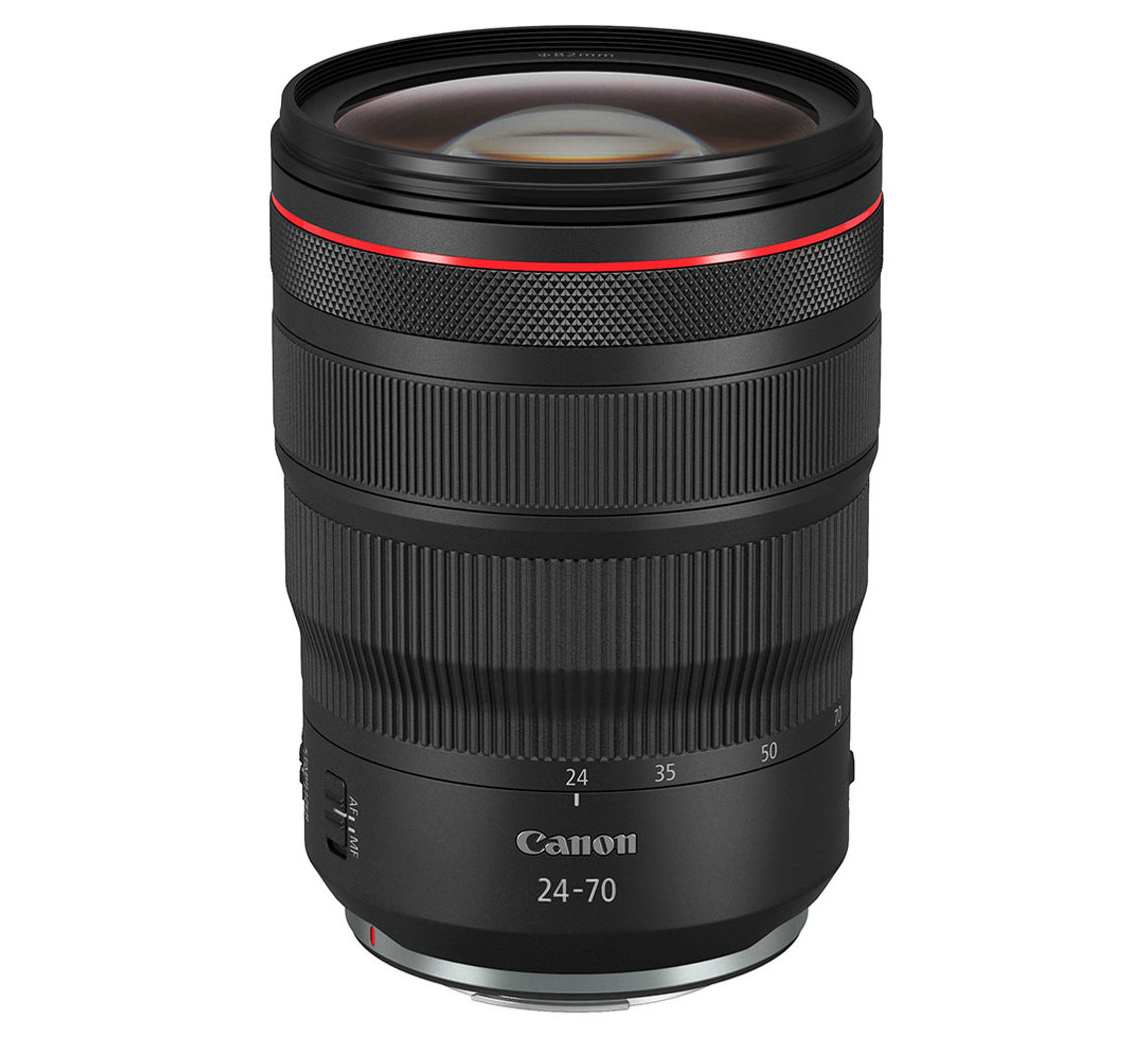
About as good as it gets for quality and versatility in the Canon RF lineup, this is my most-used lens, now, on my R6 MK2.
Fast, sharp, and with enough focal range to cover landscapes, portraits, and cars, this is one of those lenses that never disappoints. It's brilliant.
CURRENTLY USING
Canon RF 100-400 5.6-8 USM Lens

Canon's L Lenses are gorgeous, and I've owned a few of them (14-35, 24-105, 70-200, 100-500), but when it comes to the longer end, I need it to be as light as possible, or else I just won't bring it with me everywhere.
That's the main reason I bought this. I'm old and crusty, and I need to carry a tonne of gear with me when I shoot YouTube videos and landscape images. This lens is so light, I can fit it in my bag and carry it with me everywhere. And boy is it good!
UPDATE: I sold this lens to buy the RF 100-500, but then when I sold the 100-500 to buy my Hasselblad X2D, I bought the RF 100-400 again!
Watch video review | Check price
CURRENTLY USING
Canon RF 50mm 1.8 STM
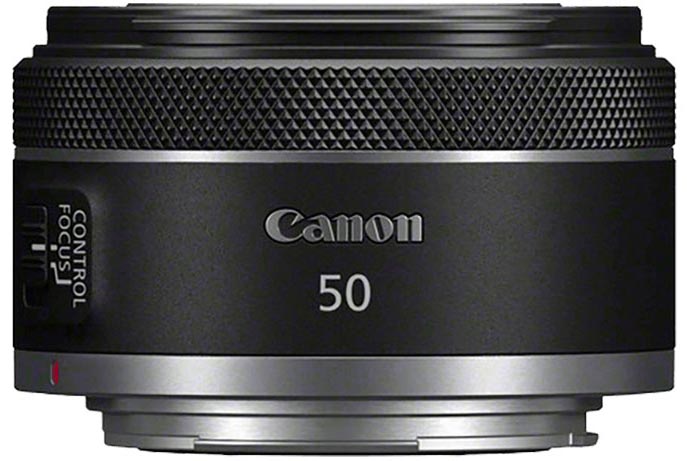
Some of the sharpest, fastest and cheapest lenses in the Canon range are the RF and EF 50mm 1.8 twins. Both offer beautiful bokeh, (the shape of the blurred elements in an image), making them wonderful for subject isolation against a busy background.
They're light, focus fast, and look lovely and bright through the viewfinder.
Yes, the RF 50mm f1.2 is epic – and if you can afford it, you should indulge – but the 1.8 variants offer similar results for significantly less money.
Every camera bag should contain a nifty-50.
CURRENTLY USING
Sigma EF 105mm 1.4 Lens

A veritable beast of a lens, the Sigma 105 f/1.4 yields results few other lenses can.
If it's creamy bokeh you want, or tight, compressed images of cars or architecture, or beautifully flattering portraits – this is the lens for you.
But be warned: it's bloody heavy, and its amazing results will make it hard to go back to ‘normal' lenses afterwards!
Canon RF 70-200mm f/4L IS USM

The very first zoom lens I ever owned was a Ricoh 70-210 for my XR-P, and as a keen dirt bike shooter, it opened up a whole new world.
This little wonder is the same, only 100 times better. It's small, light, and beautifully made. It also focuses super fast and is pin-sharp. It's also fighting my much-loved 100-400 (soon, 100-500) for the title of Favourite Lens… Buy it.
Canon RF 100-500mm f4.5-7.1L IS Lens
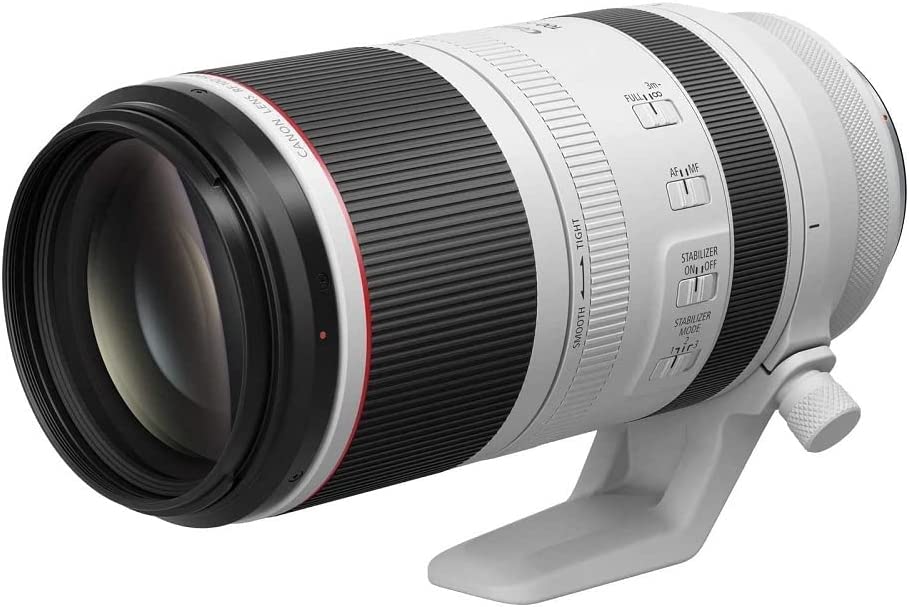
The EF 100-400 was my favourite lens for a long time. Now it's this.
I shoot around 80% of my landscapes at the long end because it allows me to pick out multiple compositions from one viewpoint, plus I can reach subjects I otherwise couldn't (private farmland, difficult terrain, etc.). Autofocus on this is super-fast, image stabilisation is better than ever, and sharpness is SHARP. It also focuses nice and close, allowing me to pick out smaller elements of a scene like flowers, insects and textures.
Get it. It's brilliant!
Canon EF-EOS R Mount Adapter

If you want to use any of the fabulous Canon EF L glass (like the 100-400mm listed below), you'll need an EF to EOS-R adapter.
Don't buy one of the 3rd-party brands – they often don't work as expected. With the Canon ones, you'll find everything works perfectly, including AF eye detect and image stabilisation.
There are three versions: a plain old adapter, an adapter with the control ring (pictured) and an adapter with a drop-in filter slot for a circular polarizer or variable ND filter. That's the one I should have bought!
Canon EF 100-400 4.5-5.6L IS USM II

I remember lusting after the Nikon 80-400 back when I had a D750, so when a mate recommended the Canon 100-400 (and promised I'd never regret it), I took his advice.
I shoot around 80% of my landscapes with this lens because it allows me to pick out multiple compositions from one viewpoint, plus I can reach subjects I otherwise couldn't (private farmland, difficult terrain, etc.). Autofocus is super-fast, image stabilisation is epic, and sharpness is delightful. It also focuses super-close, allowing me to pick out smaller elements of a scene like flowers, insects and textures.
I'll echo my mate's advice. Get it. You'll never regret it.
Canon EF 16-35mm f/4L IS USM

Every landscape photographer worth his or her salt has this lens in their kit. I had one, then sold it. Then I regretted it and bought one again.
The thing is, there are lots of choices when it comes to wide/ultra-wide lenses, but few have the build quality, weather-sealing and end-to-end sharpness of the big-brand originals. And when you're talking Canon, that means an L lens.
But the main reason I purchased this – well, there's two, actually – is that I can't (easily) fit filters to the front of my Samyang 14mm RF AF lens (now sold); and Canon hadn't yet released the RF 14-35mm f/4L IS USM lens. But that, of course, is no longer true, and the lovely 14-35 has since spent quality time in my bag as the 16-35 no doubt wows its new owner.
I might favour the longer end for shooting landscapes, but when I must go wide, this (and now, the 14-35) is a winner.
Canon RF 14-35 f/4L IS USM

The king is dead. Long live the king!
Too dramatic? Maybe, but this compact wonder is all the wide landscape lens you'll ever need. Forget the 15-35 2.8 – this is just as sharp, but cheaper, lighter, and dare I say, more beautiful to look at.
Yes, it does have an issue with vignetting at the very wide end, but the lens profile in Lightroom takes care of that. In any case, I always crop my images (either as 4:3, 1:1 or 16:9), so it's never an issue.
I've shot wide open up close to tree branches, and the bokeh is delicious. I reckon you could buy this lens, the RF 70-200 f4 and the RF 50 f1.8, and you'll be set for 99% of your landscape photography needs.
Canon RF 24-105mm 4.0 L

Don't knock the all-rounder. Sometimes, you just want to grab a quick shot, and the good old 24-105 is the perfect (almost) do-it-all focal range.
This lens used to live on my camera when it was in the bag. It's was also the lens I often looked through when having my first check a scene. The wide end is usually wide enough for most of the more ‘intimate' compositions, while the long end offers respectable reach for many shots, too. It's also very nice for portraits.
Plus, the constant f4 aperture is good to have, though definitely not essential for landscapes. Best of all, though, it's an L lens, so it's weather-sealed and biting sharp.
If I was going to buy my first lens, or only one lens, this would be it.
Kentfaith K&F Magnetic CPL Filters

The one filter I recommend every photographer owns is a CPL (circular polarising linear) filter.
A high quality CPL filter cuts reflections, boosts colour saturation, and brings clarity and definition to your images.
I've used Kentfaith filters for years, and I swear by them.
DJI Mavic 3 Classic Drone

I didn't know what I was missing until I bought a drone! It's amazing how much you don't see when you shoot at ground level, and nothing illustrates this like the footage you get out of a drone.
Whether you're looking for scene-setting B-roll for your videos or incredible landscape images for your portfolio, all the DJI drones deliver.
In my very first outing (I'd never flown a drone before), I used all three batteries that come with the Fly More Combo (each lasting around 30 minutes!) and managed to get some excellent 4K 24 fps video and some wonderful images.
I'm now onto my fourth drone – the amazing DJI Mavic 3 Classic, and its camera is truly worthy of any landscape photographer's bag.
DJI Mavic 3 Pro

This now my fifth drone, and it's easily the most impressive – the three-camera DJI Mavic 3 Pro. It's as close to perfect as you can get right now in a prosumer-grade aerial camera. Just brilliant!
DJI Air 3

I miss that gorgeous Hasselblad camera on the Mavic Pros, but boy this thing is good! The flight times are awesome, and the two-camera system gives you flexible framing/perspective options for stills and video. Thoroughly impressed with this thing.
CURRENTLY USING
iFootage Gazelle Uprise TC6S Tripod

Tripods are a very personal thing, and over the years, I've figured out what matters most to me in securing and positioning my camera.
Some of the things that impact your experience with a tripod are:
- Weight
- Maximum height
- Packed height
- Rigidity
- Leg operation (twist vs lever)
- Spreading operation
- Levelling
- Build quality
- Flexibility
- Aesthetics
For me, the iFootage Gazelle Uprise TC6S carbon fibre tripod ticks every box. It's beautiful, well-made, highly flexible, lightweight, and has an integrated bowl-head for fast levelling. The icing on the cake is that the iFootage tripods are far less expensive than the likes of GITZO and RRS. I've now moved this tripod into my studio for product shots, and use the bigger TC9 (below) for stills out in the field. The Peak Design is back in service for in the field videos since it only has to hold the tiny Sony ZV-1 or my iPhone.
iFootage Gazelle TC9 Tripod

The iFootage Uprise TC6S, above, is excellent. But on sloping ground, or when you need more height, nothing beats the ‘Big Bastard'.
This tripod is extremely sturdy, beautifully made, and gives me all the height I need without worrying about a centre column.
Unlike the TC6, its Fastbowl system is adjusted using an underslung twist grip, so it's taken me a little while to get used to it. But for height, strength and stability, this beast cannot be beat. I love it.
CURRENTLY USING
Peak Design Travel Tripod (Carbon)

I fell in love with this thing the moment I saw it. It's just so bloody gorgeous! After that, it was only a matter of convincing myself that I actually ‘needed' it.
The guys at Peak Design make some beautiful gear. It's clear they think deeply about the user experience, and their quality shines through with every single product – including their bags and straps.
As a hiking tripod, I reckon the carbon version of this is without peer. It folds up super small yet extends tall enough for a six-footer. The innovation is outstanding, and despite running 5 sections per leg, it's super rigid, supporting my R5 and any lens easily.
It's not quite as rigid as the iFootage in windy conditions, but it's not far off – which is amazing, because the other two are huge by comparison. Everything from the head design, the cam locks and the hidden phone holder are beautifully-made and a delight to use.
If I need to wander more than a mile, I can leave the bigger tripod in the car. It ain't cheap, but it's one of those products you will love every time you hold it in your hands.
I'm now using the little gem again as my video camera tripod.
Watch tripod review video | Check price
CURRENTLY USING
Manfrotto 055 Tripod

Build like a brick sh*t-house, the Manfrotto 055 is used by landscape photographers the world over.
I only have the aluminium version because I bought it before I'd experienced the virtues of carbon fibre. But that said, it's one of those items where, unless you're walking a fair distance to your location, it'll serve you just fine.
I like the way the centre column slides up and over 90 degrees – great for peering over the edge of a bridge, or getting close to macro subjects. Just a word on caution – make sure you align it properly when placing it back in the vertical position or you might crack the sleeve that controls the angle movement.
I have just retired this tripod from fieldwork (I use it in my studio, now), and have moved to the iFootage TC9 for outdoor work.
CURRENTLY USING
Really Right Stuff BH-55 Ball Head with Full-Size Screw-Knob Clamp

It must be the German in me, but I'm borderline fanatical about buying quality products. It needn't always be the best, but if it's attainable without selling one of the kids, I'll get it.
That was the thinking behind this purchase. After using the iFootage Gazelle with its brilliant bowl head design, it occurred to me I could live with a ball head again. Given that 99.9% of tripod mounted images are made with the camera levelled, I figured I could leave this head dead level, then make my fine adjustments with the iFootage TC6's bowl head.
By all accounts, this head should survive a nuclear winter, so I suspect, like the Manfrotto 410 Junior, I'll have this unit forever.
CURRENTLY USING
Peak Design Standard Plate

Like all Peak Design gear, the Standard Plate is beautifully made, carefully thought out and a delight to use. If you don't use an L-Bracket, use one of these.
I have one on my 100-400's tripod collar and the DJI Osmo Pocket 2 Extension Rod so I can attach them to any one of my tripods quickly and easily. You can also add Peak Design Anchor Links to one of the four holes for sling-style strap attachment.
CURRENTLY USING
Lowepro Pro Trekker BP 550 AW II Pro Camera Gear Backpack

I've used Lowepro bags since 1986, and I've never suffered a breakage. Not once. My very first bag even survived an off-track excursion by the first HSV Clubsport during an editorial shoot at Calder Raceway.
The Pro Trekker 550 AW II is easily my favourite Lowepro to date. It's as tough as nails, infinitely configurable, and comfortable to carry fully loaded. I also like the way they've covered it in loops, allowing you to mount straps and accessories for pouches, bottle holders and tripod carriers.
I've now added the Pro Trekker 350 AW II to my kit for when I'm doing a full-blown video shoot and need EVERYTHING. These bags are well-made and built to last. Plus, I reckon they look pretty cool.
CURRENTLY USING
Canon imagePROGRAF Pro-300 Printer

In the old days, we could hold our images in our hands – either as transparencies (slides) or prints.
Printing your own images brings back the feeling of satisfaction you get when holding your art. It makes everything real.
Yes, it's usually more cost-effective to have someone else print our images; after all, high-end printers, paper and ink aren't cheap. But the thing is, we almost never get someone to print our images.
If you can afford it, I highly recommend getting one. Pair it with some high-grade papers from Canson (the Platine and Baryta papers are gorgeous), and witness the feeling of holding your art in your hands.
My current printer, the imagePROGRAF Pro-300, prints up to A3+, and is a great starting point. Later, I'll probably get the Pro-1000 so I can print A2 size.
CURRENTLY USING
Rode NTG2 Shotgun Mic

Here's a surprising real true fact. The audio in your videos matters more than the video in your videos.
It doesn't make sense, but you know it's true. Try watching a great video with crappy audio (flat, echoing, distorted, affected by wind, whatever), and see how long you can bear it.
Now try a crappy video (low lighting, jumpy footage, poor composition) but with great audio. I bet you stick around for this one.
We humans are weird like that. Certain senses dominate the others.
Like smell. I distinctly remember the feeling of luxury and exclusivity when we entered a waterfront villa we'd rented for a weekend. It was thanks to L'Occitane's scented hand creams and soaps placed throughout the home.
That was over 10 years ago, and I've been a L'Occitane buyer ever since.
Audio matters, and when it comes to voice, the NTG2 is outstanding. This one's an XLR mic, so you'll need a recording device that accepts an XLR input (I use the Rodecaster Pro in my studio, and a Zoom H5 if doing an outside interview). I use this mic to record all my indoor talking head videos.
CURRENTLY USING
Aputure MC RGB Light
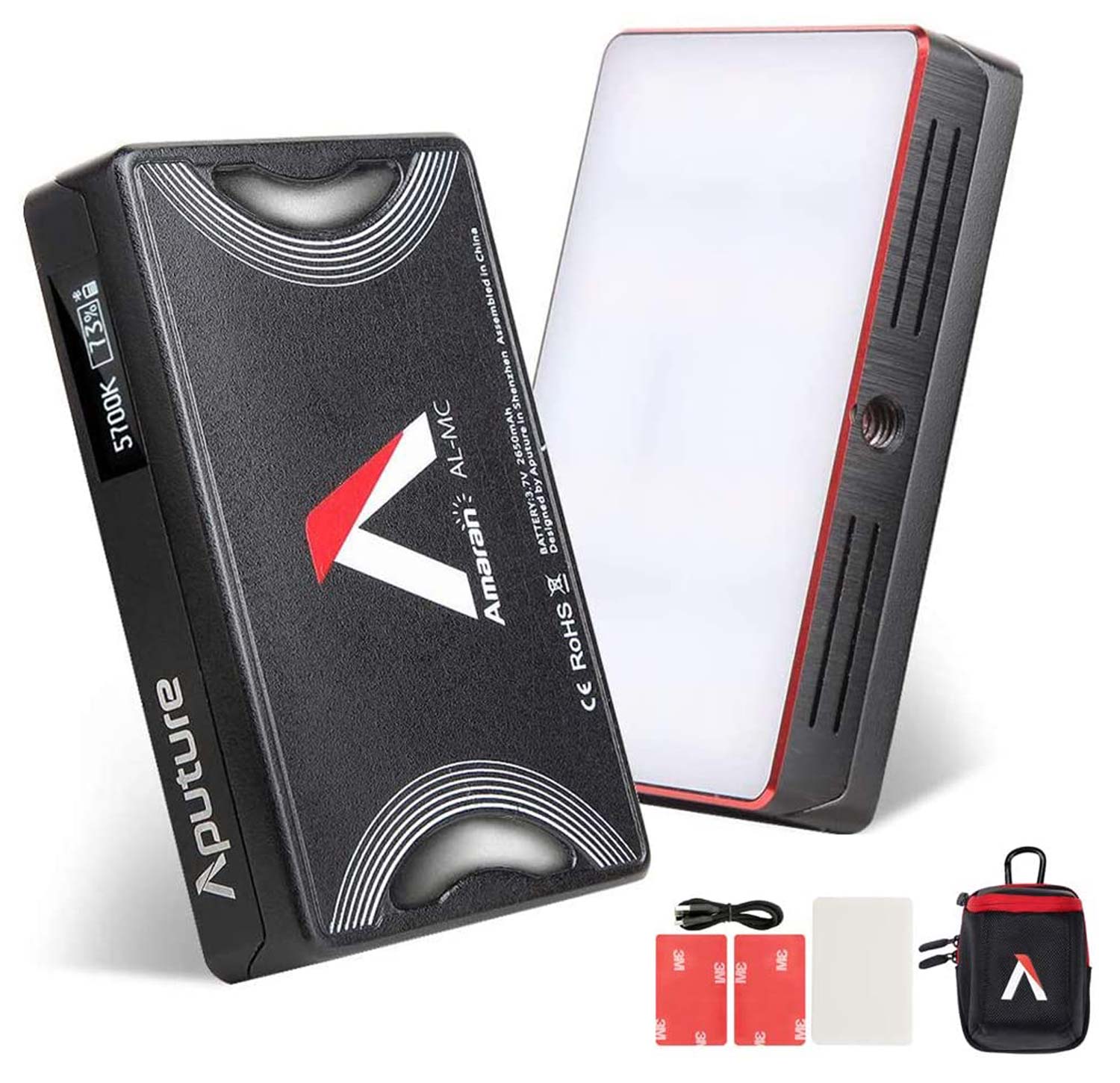
If you want to light up part of your scene in colour like all those lovely videos you see on YouTube, get one of these. Or four.
This gorgeous, tiny light lets you control hue (colour), saturation (richness), and intensity (brightness) either with the in-built dial or the brilliant Sidus Link app.
You can literally recreate ANY colour with this thing, and then slap it on a tripod or stand, or attach it to something steel with its built-in magnets.
Also, instead of just using red, green and blue LEDs, it has two additional white LEDs — one balanced at tungsten and a second at daylight.
You can even do lighting effects (think fireplace glow or police lights), but one of the coolest features (and there are plenty I'm not mentioning) is the ability to point your phone’s camera at a colour, capture it, and the MC will reproduce it perfectly. Amazing.
CURRENTLY USING

Get my sporadic emails containing ideas &
questions on photography, midlife & creativity.
All content © Copyright 2025 Peter Fritz | Contact
